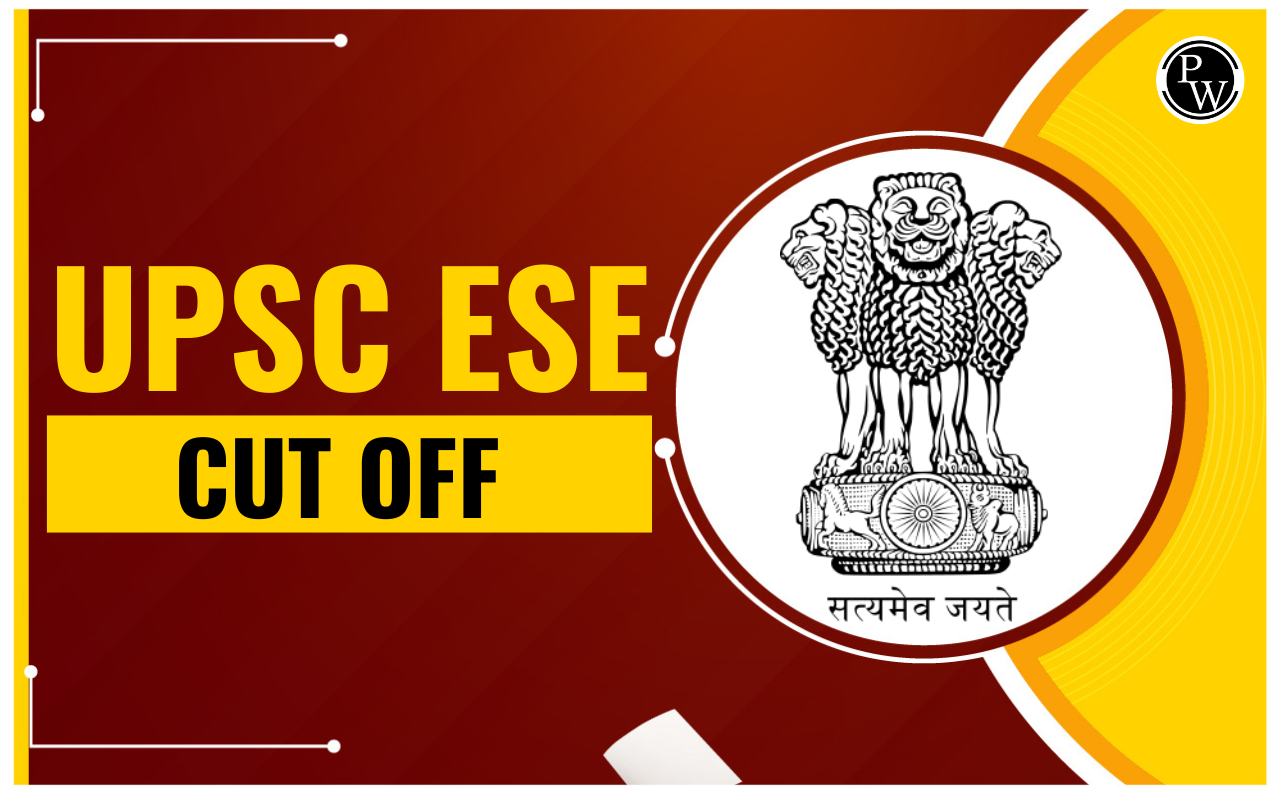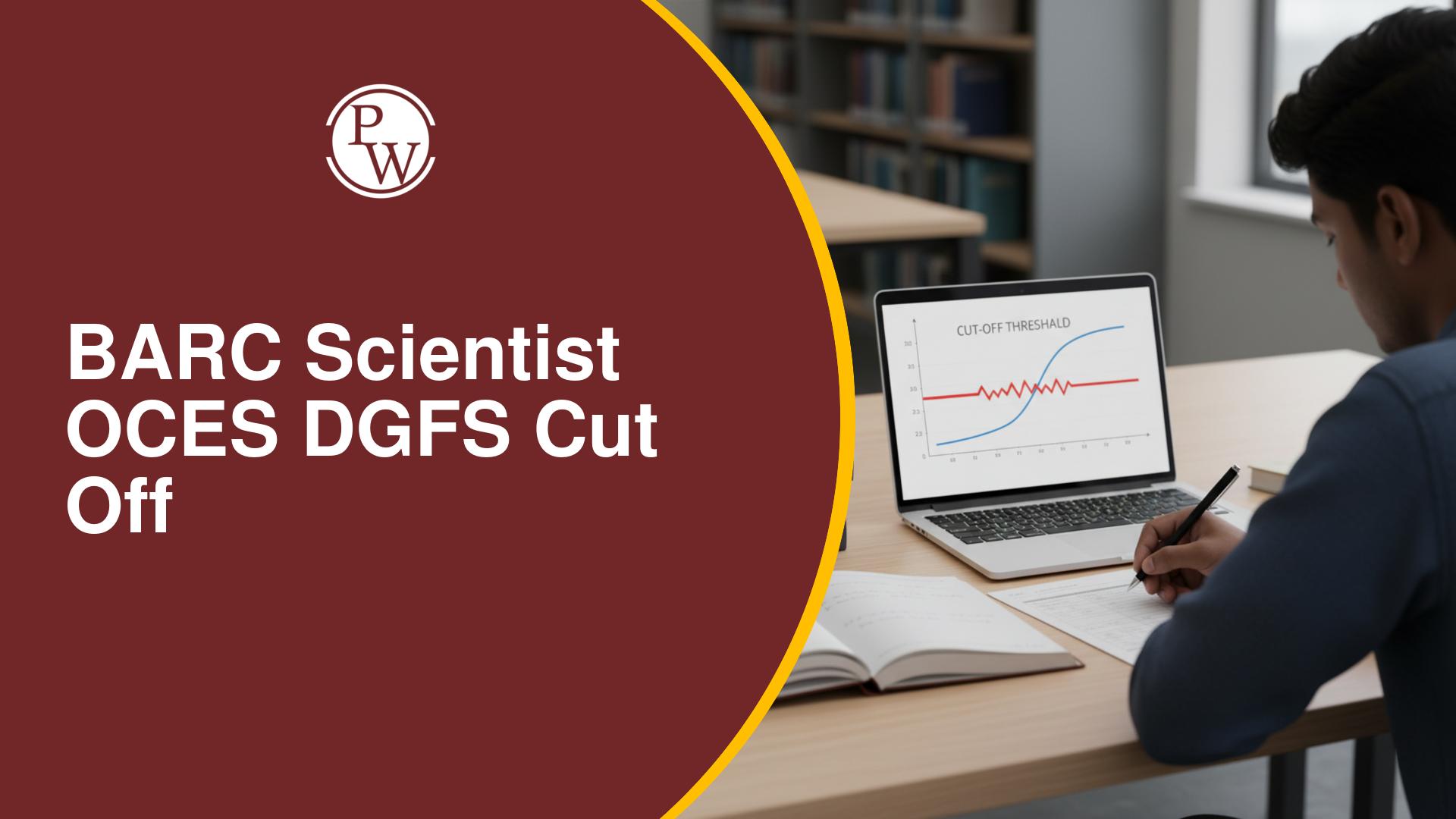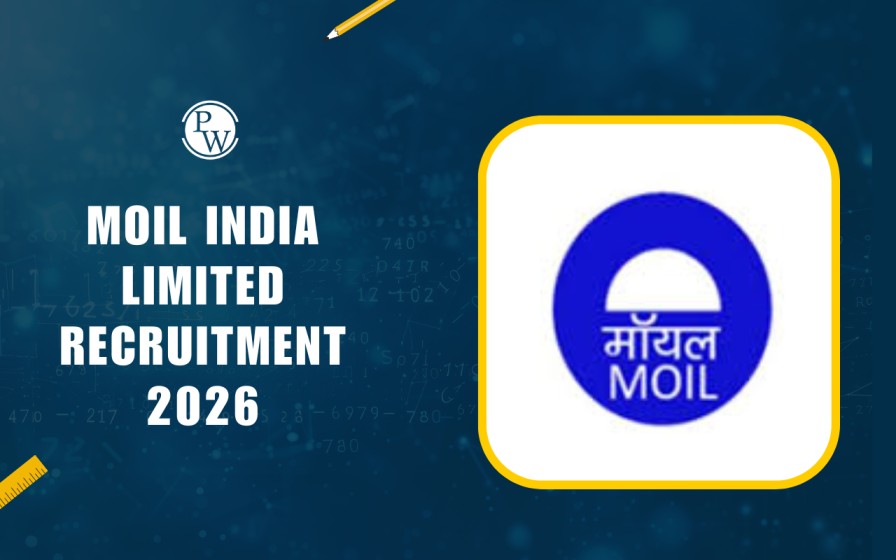
GATE Environmental Science and Engineering Syllabus 2026: IIT Guwahati (IITG) will host the Graduate Aptitude Test In Engineering in 2026 for 30 various branches, including Environmental Science and Engineering.
Candidates who are appearing for the GATE 2026 ES examination must go through the in-depth syllabus to prepare in a structured manner.
A thorough understanding of GATE Syllabus is crucial for aspirants to know the topics from which questions will be asked. We have outlined a detailed GATE Environmental Science and Engineering syllabus to ace the preparation of aspirants.
GATE Environmental Science and Engineering Syllabus 2026
The Environmental Science and Engineering paper was added to the GATE 2020 examinations. The GATE ES Syllabus consists of subjects like Environmental Chemistry, water resources, and environmental hydraulics, among others. The entire syllabus for the ES paper is classified into nine different sections.
The exam comprises 65 questions and carries a total weightage of 100 marks. In order to prepare effectively, candidates must review the comprehensive syllabus to gear up their preparation. The paper includes questions from general aptitude, engineering mathematics and core subjects.
GATE Environmental Science and Engineering Syllabus 2026
The GATE Environmental Science and Engineering Syllabus 2026 is distributed into 9 different sections to assess the comprehensive conceptual knowledge of students. The details of sections involved in GATE ES paper are tabulated below:
| Sections In GATE ES Syllabus 2026 | |
| Sections | GATE Environmental Science and Engineering Subjects |
| Section 1 | Mathematics Foundation |
| Section 2 | Environmental Chemistry |
| Section 3 | Environmental Microbiology |
| Section 4 | Water Resources and Environmental Hydraulics |
| Section 5 | Water and Wastewater Treatment and Management |
| Section 6 | Air and Noise Pollution |
| Section 7 | Solid and Hazardous Waste Management |
| Section 8 | Global and Regional Environmental Issues |
| Section 9 | Environmental Management and Sustainable Development |
Let’s discuss these nine sections of the GATE Environmental Science and Engineering Syllabus 2026 in great detail.
GATE Environmental Science & Engineering Syllabus 2026 For General Aptitude
The GATE Environmental Science and Engineering Syllabus for General Aptitude covers quantitative aptitude, verbal aptitude, and other topics, as outlined below:
| GATE ES Syllabus for General Aptitude | |
| Topics | Sub-topics |
| Verbal Aptitude | Basic English grammar: tenses, articles, adjectives, prepositions, conjunctions, verb-noun agreement, and other parts of speech Basic vocabulary: words, idioms, and phrases in context Reading and comprehension Narrative sequencing |
| Quantitative Aptitude | Data interpretation: data graphs (bar graphs, pie charts, and other graphs representing data), 2-and 3-dimensional plots, maps, and tables Numerical computation and estimation: ratios, percentages, powers, exponents and logarithms, permutations and combinations, and series mensuration and geometry elementary statistics and probability |
| Analytical Aptitude | Logic: deduction and induction, analogy, numerical relations and reasoning |
| Spatial Aptitude | Transformation of shapes: translation, rotation, scaling, mirroring, assembling, grouping, Paperfolding, cutting, and patterns in 2 and 3 dimensions |
GATE Environmental Science and Engineering Syllabus 2026 for Core Subjects
The GATE Environmental Science and Engineering Syllabus 2026 for core subjects covers various topics from nine sections. Find out the important topics for the GATE ES Paper 2026 in this section.
| GATE ES Syllabus for Core Subjects | |
| Section 1: Mathematics Foundation | |
| Linear Algebra | Determinants and matrices, Systems of linear equations, Eigenvalues and eigenvectors |
| Calculus | Functions, Limits, Continuity, Differentiability, Local maxima and minima, Taylor series, Tests for convergence, Definite and indefinite integrals, Application of definite integrals to obtain area and volume, Partial and total derivatives |
| Differential Equations | Linear and non-linear first-order ordinary differential equations (ODE), Higher order linear ODEs with constant coefficients, Cauchy’s and Euler’s equations, Laplace transform and its application in solving linear ODEs |
| Probability and Statistics | Descriptive statistics, Measurement of central tendency, Dispersion, Skewness and kurtosis, Probability concepts, Conditional probability, Bayes theorem, Risk and reliability, Probability distributions, Correlation, Single and multiple regression models, Hypothesis testing (t-test, F-test, chi-square test) |
|
Section 2: Environmental Chemistry |
|
| Fundamentals of environmental chemistry: | Covalent and ionic bonding; Chemical equations, concentration, and activity; Structure and chemistry of organic molecules; Radioactivity of elements; Chemical equilibria; Thermodynamics and kinetics of chemical reactions |
| Principles of water chemistry | Water quality parameters and their measurement; Acid-base equilibria; Buffer solution; Carbonate system; Solubility of gases in water; Complexation, precipitation, and redox reactions; Inorganic and organic contaminants in water and their speciation |
| Soil chemistry | Organic matter, nitrogen, phosphorous, potassium, cation exchange capacity, base saturation, and sodium absorption ratio |
| Atmospheric chemistry | Composition of the atmosphere; Reactivity of trace substances in the atmosphere; Urban atmosphere: smog and particulate pollution; Chemistry of ozone formation; Chemistry of stratosphere |
|
Section 3: Environmental Microbiology |
|
| Prokaryotic and eukaryotic microorganisms | Characteristics of diverse groups of microorganisms; Classification of microorganisms; Microbial diversity; Plant-microbe and soil microbe interactions; Role of microorganisms in wastewater treatment, bioremediation, and biogeochemical cycling |
| Cell chemistry and cell biology | Structure of proteins, nucleic acids (DNA and RNA), lipids, and polysaccharides; Bonds in biomolecules; Stereoisomerism in biomolecules; Structure of cell; Structure and function of the cytoplasmic membrane, cell wall, outer membrane, glycocalyx, chromosomes, endospores, storage products, mitochondria, and chloroplasts |
| Microbial metabolism | Anabolism and catabolism; Phosphorylation; Glycolysis; TCA cycle; Electron transport chain; Fermentation; Anaerobic respiration; Energy balances; Enzymes and Enzyme kinetics |
| Growth and control of microorganisms | Bacterial nutrition and growth; Specific growth rate and doubling time; Monod’s model; Types of cultural media; Batch and continuous culture; Effects of environmental factors on growth; Control of microbes using physical and chemical methods |
| Microbiology and health | Pathogens and modes of transmission; Indicator organisms; Quantification of coliforms using MPN and membrane filtration techniques |
|
Section 4: Water Resources and Environmental Hydraulics |
|
| Global Water Resources | Structure, properties, and distribution of water; Water quality; Threats to water resources; Water conservation |
| Surface Water Resources | Hydrological cycle and water balance - precipitation, infiltration, evapotranspiration, and runoff; Flow hydrographs; Unit hydrographs; Stage-discharge relationship; Reservoir capacity; Reservoir and channel routing; Surface run-off models; Surface water management; Rainwater harvesting and storage |
| Groundwater Resources | Geologic formations as aquifers; Vadose and saturated zones; Confined and unconfined aquifers and their parameters - porosity, permeability, transmissivity, and storage coefficient; Darcy’s law and applications; Steady state well hydraulics |
| Environmental hydraulics | Concepts of mechanics; Properties of fluids; Pressure measurement; Hydrostatic force on surfaces; Buoyancy and flotation; Laminar and turbulent flow; Flow through pipes; Pipe networks; Boundary layer theory; Forces on immersed bodies; Flow measurement in channels and pipes; Kinematics of flow; Continuity, momentum and energy equations; Channel hydraulics - specific energy, critical flow, hydraulic jump, rapid and gradually varied flow; Design of lined and unlined channels |
|
Section 5: Water and Wastewater Treatment and Management |
|
| Water and wastewater quality parameters | Eutrophication and thermal stratification in lakes; River pollution: Oxygen sag curve |
| Water treatment methods | Screening, sedimentation with and without coagulation, filtration, desalination, disinfection; Water distribution and storage |
| Point and non-point sources of wastewater | Population forecasting methods; Design of sewer and stormwater sewers; Sewer appurtenances; Preliminary, primary, secondary, and tertiary sewage treatment; Sludge generation, processing, and disposal methods; Sewage farming |
| Sources and characteristics of industrial effluents | Concept of Common Effluent Treatment Plants (CETP); Wastewater recycling and zero liquid discharge |
| Kinetics and reactor design | Mass and energy balance, Order and rate of reactions, Batch reactors, Completely mixed flow reactors, Plug flow reactors |
|
Section 6: Air and Noise Pollution |
|
| Structure of the atmosphere | Natural and anthropogenic sources of pollution; Atmospheric sources, sinks, transport; Indoor air pollution; Effects on health and environment; Air pollution: gases and particulate matter; Air quality standards; Primary and secondary pollutants; Criteria pollutants, ambient and source standards, air quality indices, visibility |
| Particulate pollutants | Measurement and control methods; Control of particulate air pollutants using gravitational settling chambers, cyclone separators, wet collectors, fabric filters (Baghouse filter), electrostatic precipitators (ESP) |
| Gaseous pollutants | Measurement and control methods; Control of gaseous contaminants: absorption, adsorption, condensation, and combustion; Control of sulphur oxides, nitrogen oxides, carbon monoxide, and hydrocarbons; vapor-liquid and vapor-solid equilibria; Diffusion, Fick’s law, and interfacial mass transfer |
| Automotive emission controls | fuel quality, diesel particulate filters, catalytic convertors |
| Air quality management | Point, line and area sources; Inventory; Influence of meteorology - wind rose diagrams, stability, mixing height, topography, dispersion modelling, monitoring |
| Noise pollution | Sources; Health effects; Standards; Measurement and control methods |
|
Section 7: Solid and Hazardous Waste Management |
|
| Integrated solid waste management | Waste hierarchy; Rules and regulations for solid waste management in India |
| Municipal solid waste management | Sources, generation, characteristics, collection and transportation, waste processing and disposal (including reuse options, biological methods, energy recovery processes and landfilling) |
| Hazardous waste management | Characteristics, generation, and fate of materials in the environment, treatment and disposal |
| Soil | Soil contamination and leaching of contaminants into groundwater |
| Management of biomedical waste | Plastic waste and E-waste: Sources, generation and characteristics; Waste management practices including storage, collection and transfer |
|
Section 8: Global and Regional Environmental Issues |
|
| Global effects of air pollution | Greenhouse gases, global warming, climate change, urban heat islands, acid rain, ozone hole |
| Ecology and various ecosystems | Biodiversity; Factors influencing increase in population, energy consumption, and environmental degradation |
|
Section 9: Environmental Management and Sustainable Development |
|
| Environmental management systems | ISO14000 series; Environmental auditing: Environmental Impact Assessment; Life cycle assessment; Human health risk assessment |
| Environmental Law and Policy | Polluter pays principle, Precautionary principle; The Water and Air Acts with amendments; The Environment (Protection) Act (EPA) 1986; National Green Tribunal Act, 2010; National Environment Policy; Principles of International Law; and International treaties |
| Energy and environment | Energy sources – overview of resources and reserves; Renewable and non-renewable energy sources; Energy-Environment nexus |
| Sustainable Development | Definition and concepts of sustainable development; Sustainable development goals; Hurdles to sustainability; Environment and economics |
GATE Environmental Science and Engineering Syllabus 2026 PDF
The GATE Environmental Science and Engineering Syllabus PDF is a comprehensive document that outlines the subjects covered in the GATE ES exam. It provides a detailed overview of the key topics that they need to be familiar with in order to ace the final GATE ES exam.
The GATE Environmental Science and Engineering syllabus PDF serves as an essential resource, helping aspirants organize their study materials and plan their preparation effectively. Download the GATE Environmental Science and Engineering Syllabus PDF from the link below.
GATE Environmental Science and Engineering Syllabus PDF
GATE Environmental Science and Engineering - Weightage of Topics
As per the GATE previous year question papers for the Environmental Science and Engineering exam, here is the sectional weightage of the topics included in the GATE Environmental Science and Engineering syllabus 2026:
| Topic-Wise Weightage for GATE ES Syllabus 2026 | |
| GATE Environmental Science and Engineering Sections | Weightage |
| General Aptitude | 10% |
| Mathematics Foundation | 10% |
| Environmental Chemistry | 4% |
| Air and Noise Pollution | 6% |
| Environmental Microbiology | 5% |
| Solid and Hazardous Waste Management | 9% |
| Global and Regional Environmental Issues | 3% |
| Environmental Management and Sustainable Development | 6% |
| Water and Wastewater Treatment and Management | 8% |
| Water Resources and Environmental Hydraulics | 4% |
GATE Environmental Science and Engineering Exam Pattern 2026
The GATE Environmental Science and Engineering Exam consists of a 3-hour online examination. It includes MCQs, MSQs, and NATs, among other types of questions. The exam is divided into three sections: general aptitude, mathematics, and subject-based, with a total of 65 questions worth a total of 100 marks.
| GATE Environmental Science and Engineering Exam Pattern 2026 | |
| Particular | Details |
| Examination Mode | Computer-based Test |
| Exam Duration | 3 Hours |
| Sections in GATE ES Paper | General Aptitude (GA) + Core Engineering Selected Subjects (Environmental Science and Engineering) |
| Distribution of Marks in GATE ES Paper |
|
| Marking Scheme | Questions worth 1 mark or 2 marks |
| Negative Marking |
|
Elevate your GATE readiness with Physics Wallah’s GATE Online Courses. PW GATE Online Coaching offers comprehensive live sessions tailored to the syllabus, invaluable study materials, practice tests, and much more.
GATE Environmental Science and Engineering Syllabus 2026 FAQs
What are the GATE Environmental Science and Engineering subjects?
How to complete the GATE Environmental Science and Engineering syllabus in 4 months?
How can I download the GATE Environmental Science and Engineering Syllabus PDF?
What is the core environmental science and engineering subject weightage in GATE?
What is the official website to check the GATE Environmental Science and Engineering Syllabus 2026?










